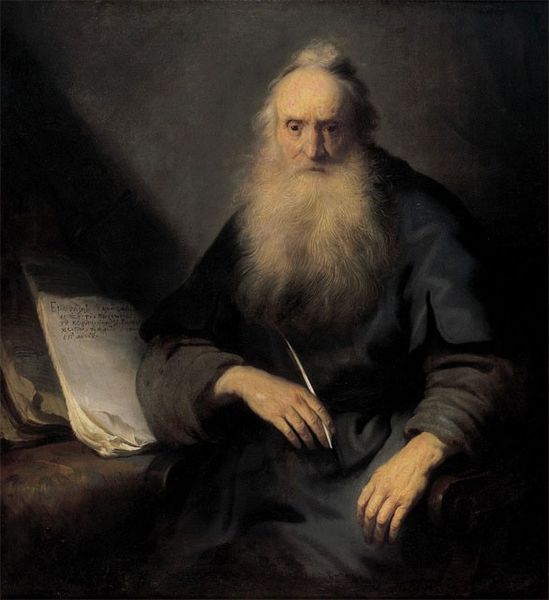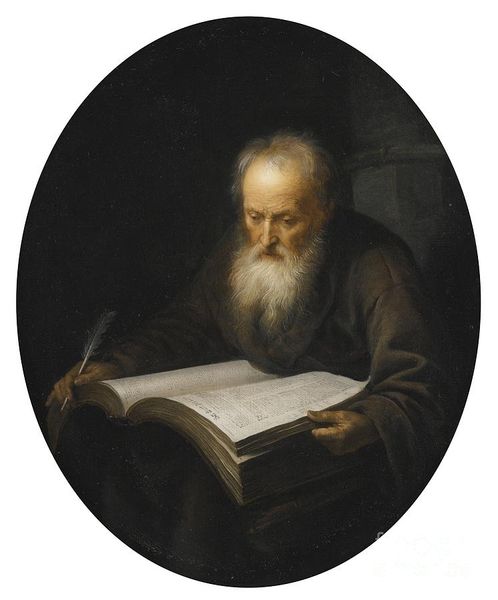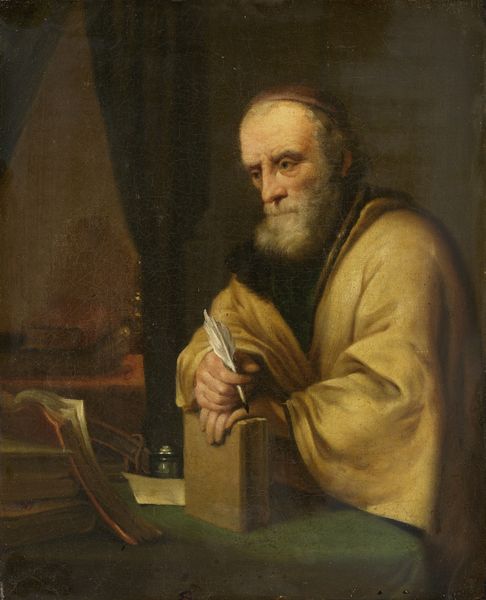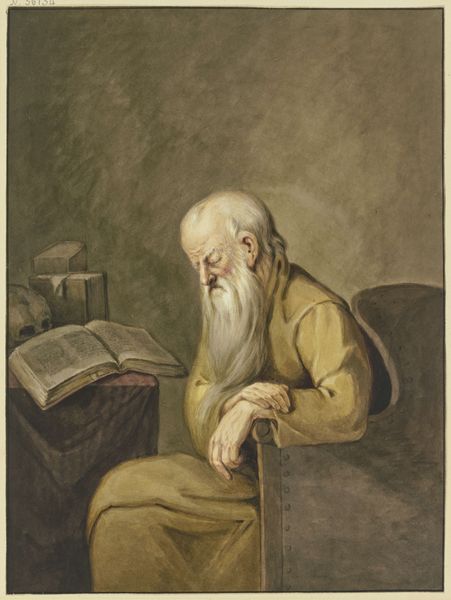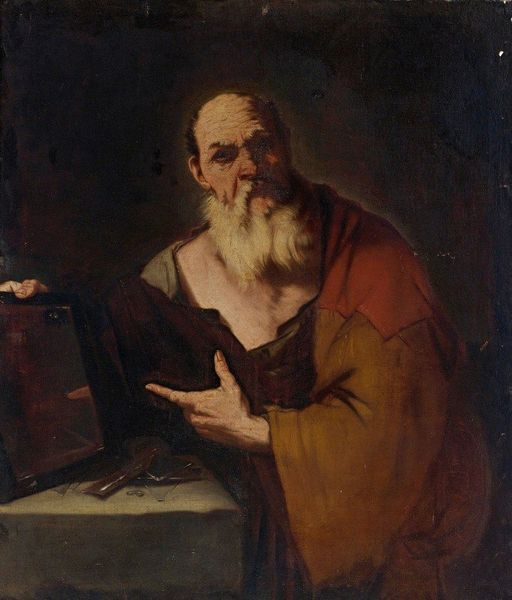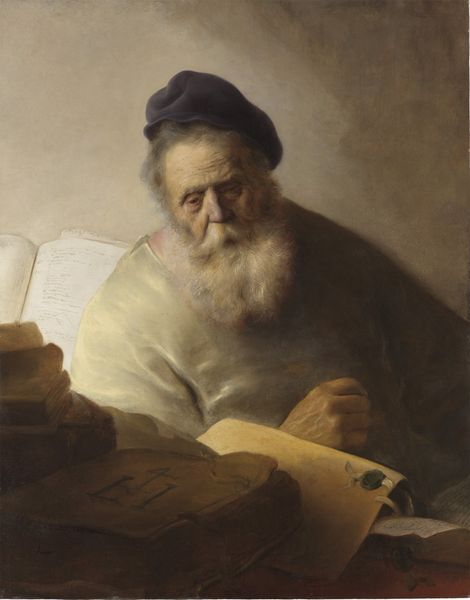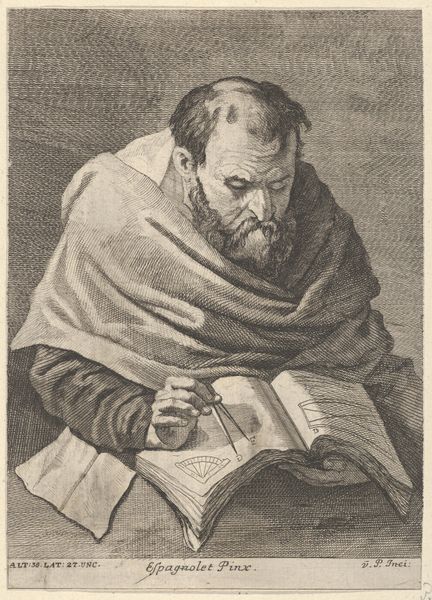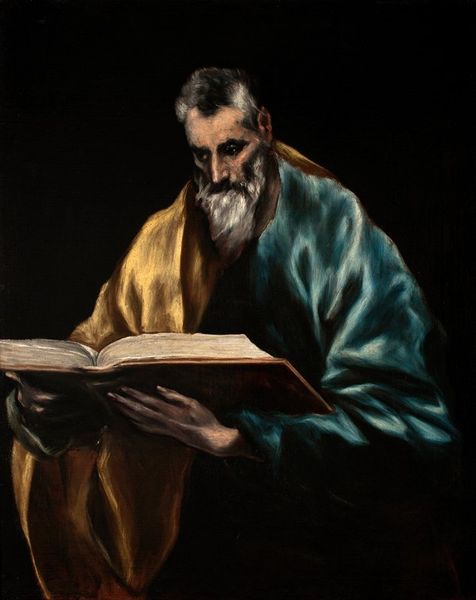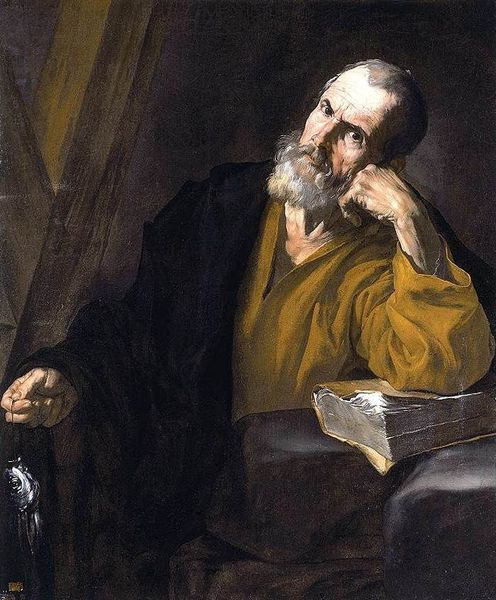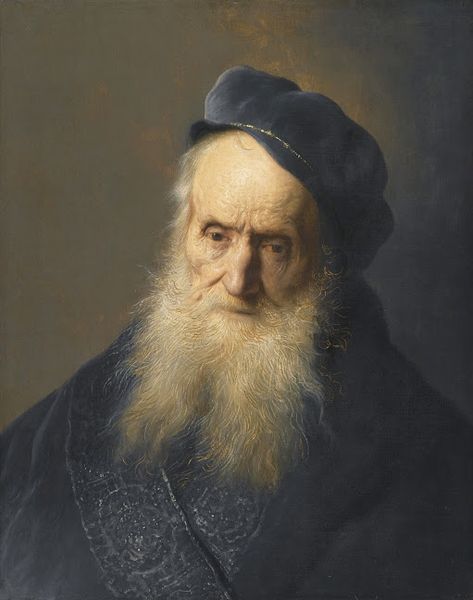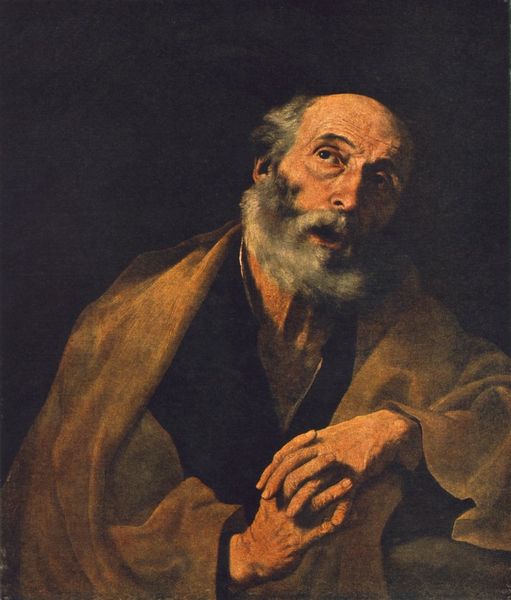
painting, oil-paint
#
narrative-art
#
baroque
#
painting
#
oil-paint
#
history-painting
#
academic-art
Copyright: Public domain
Editor: Here we have Luca Giordano’s “Philosopher,” created around 1650 using oil paint. There's such a tactile quality to the work; I'm really drawn to the wrinkles in the paper and the philosopher's aged hands. How do you interpret this piece? Curator: Look at the materials closely. The canvas itself, the pigment – these are not just passive components. How did Giordano’s access to certain materials influence the image’s final form, and how was it received by audiences accustomed to particular aesthetic values? What processes are evident here? Editor: I see the brushstrokes, especially in the drapery. They seem almost hurried, yet deliberate. Is that typical of Giordano's methods, or the period? Curator: Precisely. And what does this imply? Think about the Baroque period itself – a time of religious and political upheaval. Giordano isn't just depicting a philosopher; he’s also demonstrating a painterly technique, an act of creation mirroring, perhaps, the philosopher’s own intellectual labour. Do you see parallels between physical work and mental exertion? Editor: I do! The philosopher is laboring over the text like a craftsman at his bench. So, instead of focusing solely on the philosophical subject matter, you're drawn to how the very act of *making* the painting contributes to its meaning? Curator: Exactly. The materiality tells a story. The quality of paint, its availability, the skills of Giordano and his workshop, and finally its commodification and its accessibility to specific patrons-- it is all a record of its time. Editor: That’s fascinating. I never thought about it that way before, considering the broader social and economic context behind a work of art. Thank you for offering that material perspective!
Comments
No comments
Be the first to comment and join the conversation on the ultimate creative platform.

